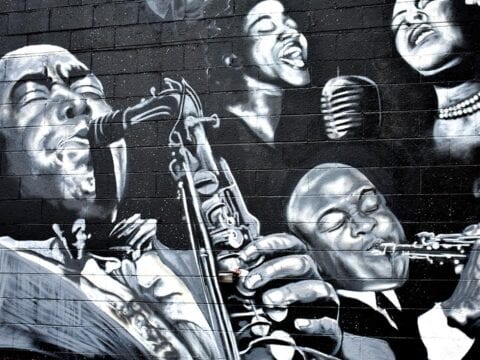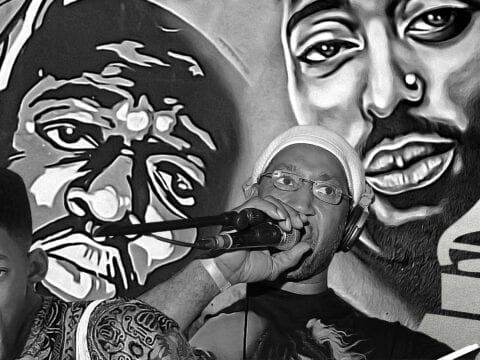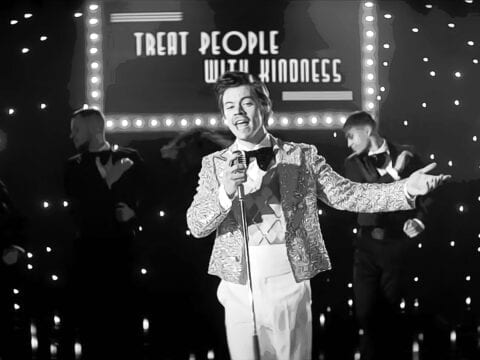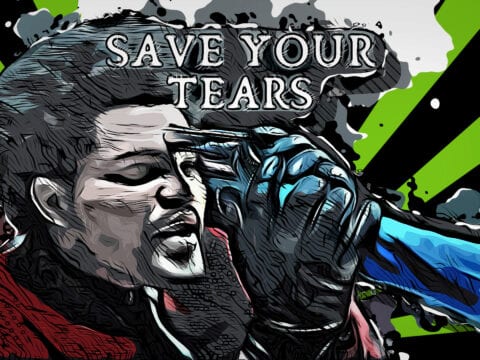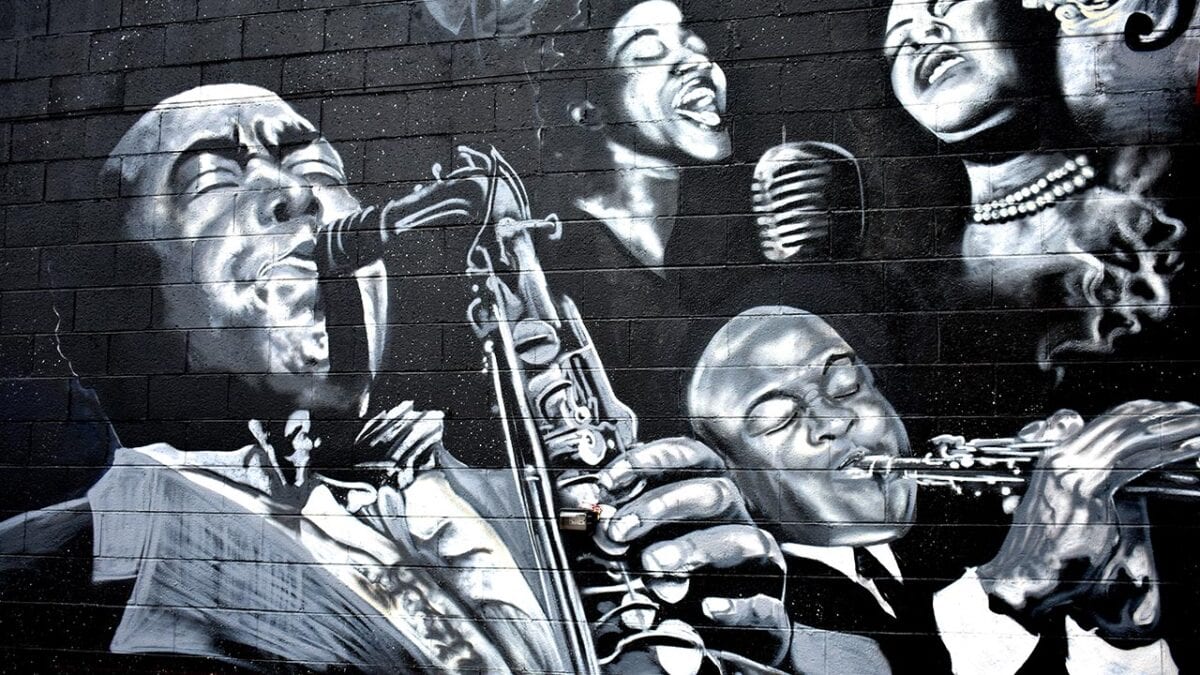
Introduction
The Jazz and Blues are arguably two of the most powerful forms of American Black music, both stemming from roots in African vocal traditions and Sothern gospel practice. We will discuss the history of Jazz and Blues music and its evolution thought out time.
The Blues can be seen as a living ancestor of Jazz, constantly informing it while also living its own vibrant life. Jazz can be seen as the prolific descendant of the Blues (and also ragtime and New Orleans dance band music), contently in dialogue with, but also expanding on Blues tradition.
A Background of Jazz and Blues
Both the Blues and Jazz exist in the history of Black American music, tracing their lineage through the African diaspora’s struggles in the United States (and the British colonies). The origins of the Blues, being the older musical tradition of the two, are much harder to trace. It seems obvious that the practice comes out of 18th and 19th century Black Americans’ vocal traditions in the southern United States, including the so-called ‘work songs’ of enslaved African people, southern religious gospel singing, and the southern folk/country music.
As we generally know it today, the origins of Jazz come out of New Orleans dance bands from the early 1900s. The lively performances of these early bands drew national attention, which began the export of Jazz to the major Jazz centers of the 20th century: New York, Kansas City, Chicago, Seattle, Chattanooga, and Boston. It is impossible to pinpoint specific starting points for either of these musical practices, as they both exist as a part of a cultural process, in dialogue with each other, as well as other musical forms.
Understanding the cultural histories of both of these musical forms is crucial to developing a deep understanding of them. The Blues and Jazz’s existence are predicated on the history of African American struggle in the United States. It is common for educational institutions to attempt to distill these practices into abstract musical structures: the Blues into the common 12-bar repeating form, and Jazz into a – head-in, improvisation, head-out – form, each with its prescribed scales and chords.
However, many prominent Jazz and Blues practitioners argue that this attempt at formalizing specific musical devices is really missing the point entirely.
One particular example is Richard Davis, acclaimed bassist, who taught for years at the University of Wisconsin-Madison. His Jazz education was based on a combination of storytelling and personal engagement with music. This is, in many ways, a deep encapsulation of what Blues and Jazz practice is. Davis is also not unique in this method of teaching these kinds of music. Many of the famous Jazz musicians of the mid 20th century, who ended up teaching at major universities, drew upon teaching approaches like this.
Roots and Traditions in Blues Music
The Blues, as its root, is a vocal tradition. This emphasis on the voice is a value brought to the United States during the slave trade, starting in the 17th century and continuing through the 19th. African slaves, while working in the fields of the southern United States, would sing, sometimes by choice and sometimes by force. This enforced singing was sometimes a method for plantation overseers to keep track of slaves’ whereabouts.
Over time, these work songs evolved into a folk performance style, designed to express personal hardships, broken hearts, addiction, run-ins with the law, and other social problems. It is because of this history that Blues is first and foremost a vocal form.
When B.B. King is playing a Blues tune on his guitar, the essence of it is still vocal – he is singing through his guitar. Also, B.B. King, as well as any serious Blues musician, sings with their voice. Their instrument is just another way of expressing their Blues. In fact, the bends and slides to notes not contained within a traditional scale associated with Blues performance indicate this tradition’s essentially vocal roots.
The actual starting point of what we today would call the Blues is impossible to pin down, nor would pinning it down actually help understand the practice. Songs with titles like “I Have Got The Blues To Day!” and “Oh, I Ain’t Got The Blues!” extend back to the mid-1800s. However, these tunes bear almost no resemblance to what we now know as the Blues.
The particular sound that we are used to today (the 12-bar, AAB structure) probably started closer to the late 1800s. This style was exported from the southern US through vaudeville and blackface minstrel performances, which toured the US, Canada, and Europe. It is a difficult piece of history to recon with.
There was certainly an unpublished history of southern Black songwriting and performance that these vaudeville and minstrel shows were drawing on. As history relies on tracing sources back, relatively little is recorded about personal folk performances in the southern United States compared to large-scale touring acts. This, therefore, shifts the credit away from the developers of this music towards the popularizers.
Engagement with this musical format increased throughout the late 1800s and early 1900s. In fact, from 1913 to 1920, over four hundred songs were published that used the term ‘Blues’ in their titles. In 1912, W.C. Handy’s band was putting out songs like: “The Memphis Blues,” “Baby Seals Blues,” and “Dallas Blues.”
W.C. Handy’s “Memphis Blues” is an interesting example of an early Blues tune. To a modern ear, this song probably bears more resemblance to a John Phillip Sousa march than a Blues. But it is an excellent example of early Blues songs which have something close to the modern 12-bar AAB structure, but not exactly. Further, the harmonies used in the “Memphis Blues” suggest the move towards the blending of major and minor tonalities which later became hallmarks of the Blues sound (in the 1930s and after).
The Era of Blues Queens
In the 1920s, the so-called ‘race records’ (records markets specifically to African American audiences) ushered in the era of the ‘Blues queens’: Bessie Smith, Mamie Smith, Ma Rainey, Ethel Waters, Ida Cox, Alberta Hunter, Edith Wilson, and others. These singers played an enormous role in codifying the Blues as we understand it today.
The ‘Blues queen’ records often involved popular singers accompanied by backing bands and orchestras of varying sizes. Bessie Smith’s 1930 release of “Black Mountain Blues” is a perfect example of one of these records. This recording displays the true codification of our modern understanding of Blues style and form – 12-bar cycle, AAB lyrical structure, major-minor sound.
Bessie Smith was a major influence for decades after her death, not just for Blues musicians, but also in the world of rock music. As late as the 1960s, Janis Joplin was performing Smith’s “Black Mountain Blues” in almost all of her concerts. Joplin also names Smith as one of her main musical influences, showing the lasting influence of the Blues in mainstream culture.
Popularization of Blues Guitarists
The 1920s and 30s also brought the rise of the Blues guitarist. While the ‘Blues queens’ dominated many Blues recordings in the early 1920s, men entered the popular Blues space through instrumental performance, both in the accompaniment of vocals and in solo form. Guitarists such as Blind Lemon Jefferson, Robert Johnson, and Leadbelly popularized solo Blues performance of voice accompanied by guitar, in dialogue with each other.
Robert Johnson is a particularly interesting example of a Blues guitarist from this era due to the lore surrounding his life and songwriting. Mythology regarding Johnson claims that he sold his soul to the devil in order to play guitar better than anyone else. This mythology and Johnson’s unique playing style helped export the Mississippi delta Blues style out of the deep south and onto the international music scene.
Robert Johnson’s famous song, “Crossroads” (recorded in 1936), became extremely influential on Blues and rock music in the following decades, with a famous cover by the 1960s rock band, “Cream”. This tune is a prime example of the male Blues singer accompanying himself on a solo guitar. This song also holds a special place in Blues lore, as is supposedly describes Johnson’s scene at the ‘crossroads’ selling his soul to the devil.
Amplifying Blues Music
With the increased access to amplification for guitars and vocals, in the 1940s, the Blues began to expand to larger audiences than was previously possible. Many 1930s swing bands used this new capacity for large-scale performance to reinvigorate older Blues repertoire from previous decades. Count Basie is probably most famous for moving his Kansas City Orchestra in this direction, helping to create a renaissance of Blues performance on the big stage.
The 1940s and 50s also brought about a new class of Blues recording artists working in the Los Angeles and east coast record industries. This shift in musical dissemination placed amplified guitars at the center of the Blues sound, replacing the earlier sound of Robert Johnson’s acoustic. Performers like T-Bone Walker, John Lee Hooker, Muddy Waters, and a young B.B. King exemplified this sound from the 1940s and 50s.
John Lee Hooker’s 1948 recording of “Boogie Chillen”
John Lee Hooker’s 1948 recording, “Boogie Chillen” (or “Boogie Chillun” depending on the release), is a prime example of this shift from the older style acoustic Blues to the amplified Blues.
This performance is still a solo performance of guitar and voice, like Robert Johnson, but with the important distinction of the amplified guitar sound. This development would continue into the 1960s as amplification and recording technology would increase. The Blues sound would become much more polished and expansive, allowing for large bands to play and tour.
In the 1960s, the recording industry drastically shifted the sound of Blues bands. Continuing advancements in performance and recording technology allowed for much larger bands to perform and tour in much larger venues than before. Interestingly, this expansion helped bring the Blues to a wider audience and arguably shifted some of the Blues’ original intimate nature.
B.B. King’s “Sweet Sixteen” Song
B.B. King’s song, “Sweet Sixteen,” is a great example of this expanded sound. The band on this track includes both the guitar and vocals in dialogue as before and a full backing band, including piano, bass, drums, and horn section. The vocal quality of King’s guitar playing is just as important as his actual singing voice, but the addition of a full band an expansive dimension not known in earlier Blues recordings.
Blues in the Late 1950s and 1960s
Another important piece of Blues history came in the late 1950s and 1960s. This was the splitting of the genre into two streams, traditional Blues and rock ‘n’ roll. Artists such as Little Richard and Chuck Berry took the traditional Blues form and recontextualized them to fit the rock style of distorted guitars, screaming vocals, and loud disruptive music. This laid the path for rock innovators like Jimi Hendrix, Janis Joplin, Eric Clapton, Keith Richards, and dozens of others. To this day, rock music and all of its subsidiaries owe their origins to the Blues.
Early History of Jazz Music
To address the history of Jazz and Blues music, we need to go back to the early 20th century. Of course, pinpointing a specific starting point of Jazz has the same problems as the Blues, but the general lineage of Jazz practice can be somewhat traced. The term Jazz came from Irish immigrants and was not originally used to describe what we would today understand as Jazz music. Music described as Jazz, which modern audiences would recognize it, comes from New Orleans dance bands in the early years of the 1900s.
Early Jazz music existed as a sort of ‘creole,’ drawing on the intersection of racial and musical traditions that existed in the 1900s, Louisiana. Blues, ragtime, and dance band music were some of the primary influences that helped to create what is now known as Jazz. In particular the relation between Jazz and Blue continues to grow to this day. Read more on how Blues has influenced Jazz for a comprehensive study on and their relation.
What is unique about Jazz is the importance of the improvising soloist. Jazz practice involves improvising solos over a given chord structure. It is common for Jazz bands to pass improvised solos among members, where each player is given a chance to assert their own musical. American novelist and essayist Ralph Ellison wrote in a piece about the Jazz guitarist Charlie Christian:
“True Jazz is an art of individual assertion within and against the group. Each true Jazz moment (as distinct from the uninspired commercial performance) springs from a contest in which each artist challenges all the rest; each solo flight, or improvisation, represents (like the successive canvases of a painter) a definition of his identity as an individual, as member of the collectivity and as a link in the chain of tradition.”
Ralph Ellison
1924 Recording of “Black Bottom Stomp” by Jelly Roll Morton
A prime example of this early Jazz style is a tune by Jelly Roll Morton (who actually claimed to have invented Jazz music in 1902), “Black Bottom Stomp“. Morton’s early Jazz compositions, in contrast to Blues writing, are very piano and band-centric – rather than being focused on voice and guitar. This is not to suggest that the voice is not important in Jazz.
The assertion of a soloist’s musical voice is crucial to the form, but rather that specific lyrical expression of the human voice is not quite as centered in Jazz music – but it certainly is there in the vocal performances of Billie Holiday, Sarah Vaughn, and Ella Fitzgerald.
The 1924 recording of “Black Bottom Stomp”, recorded by Jelly Roll Morton’s Red Hot Peppers (Morton’s band) clearly shows the focus on improvisation and shifting band roles from soloist to rhythm player. One of the major differences in these early Jazz performances is the instrumentation. Early New Orleans Jazz band tended to include: piano, drums, bass, banjo, clarinet, trumpet, trombone, and sometimes tuba. While many of these instruments remain important to Jazz today, over the decades clarinet would be replaced by saxophone, banjo by guitar, and tuba by the double bass.
The Big Band Period for Jazz
As Jazz music progressed and moved out of New Orleans, the form began to shift slightly. The 1920 and 30s saw the rise of the Jazz big bands. Count Basie and Duke Ellington’s are probably the most famous of these. Duke Ellington’s Jazz Orchestra is perhaps the keenest example of this shift from New Orleans style early Jazz to the cosmopolitan big band style.
Ellington was a New York based musician but certainly was heavily influenced by players like Jelly Roll Morton and the Red Hot Peppers. Duke Ellington composed and arranged large scale Jazz works designed for sections of players (horns, reeds, and rhythm), all while maintaining the spirit of improvisation and individual expression. Soloists would take turns improvising over Ellington’s song structures, while the rhythm section, including Duke Ellington on piano, held down the musical foundation.
In contrast with Ellington’s Jazz Orchestra, Count Basie’s big band brought a Kansas city-style to Jazz, combining mellow elements of the Blues with vibrant virtuosity of New Orleans dance bands. Basie’s band featured perhaps the most famous rhythm section of the era, ‘The All American Rhythm Section’ – Count Basie, piano; Walter Page, bass; ‘Papa’ Jo Jones, drums; and Freddie Green, guitar. Like Ellington’s band, this tight group of performers allowed for building large bands with reed and brass players to be built upon the rhythm section foundation.
The Birth of Bebop of Jazz
Following the success of the big bands, many of the soloists went on to start more pared-down bands, which helped to develop what is now thought of as a Jazz combo – piano, bass, drums, and soloists (saxophone and/or trumpet). Lester Young and Coleman Hawkins exemplified this move from the big band to the intimate combo.
Young played as a soloist for Count Basie’s big band before shifting to starting his own small group, and Hawkins played with Mamie Smith’s big band. This paring down move seemed to catch on like fire in the 1940s and 50s. Many of the great soloists who had been playing with Basie, Ellington, and the other big band leaders, started their own small groups – Charlie Parker, Ben Webster, Dizzy Gillespie, Thelonious Monk, Max Roach, Charlie Christian, and countless others.
These smaller bands ushered in the move towards bebop Jazz. This style began as a kind of musician revolt against the audience. Many extremely accomplished musicians were tired of the dance band system, with loud audiences dancing and talking during the performance as these small bands allowed for more agile playing, bebop bands composed music that was extremely fast and musically complicated, making it impossible to dance to and forcing the audience to listen. Bebop Jazz is still considered to be an extremely virtuosic and mentally taxing mode of playing. Jazz students in conservatories today spend years mastering bebop playing.
Koko Song Composed by Charlie Parker
With this increased virtuosity came the rise of Jazz ‘test songs’. These were tunes that Jazz musicians would use to test new musicians to see if they were capable of playing at the level required. Often these tunes were blisteringly fast and harmonically complex. A great example of this was the tune “Koko.” This was a song composed by Charlie Parker, written over the chord structure from an earlier Jazz song, “Cherokee” (writing a new song over older chord progressions is a practice common in the Jazz tradition – the new song is called a ‘contrafact’ of the old song).
Modal Jazz and Beyond
Following the bebop era, Jazz bands began paring down again, but instead of changing the instrumentation, the shift came in the musical focus. Instead of writing highly complex chord structures at a fast pace, bands began writing songs with very few chords, usually at relatively slow speeds. The slower speed allowed for very focused improvisation on a single subject. This style of Jazz is generally called Modal Jazz as it is centered around one or two chords and scales. The virtuosity in this is the focus on crafting improvisations that explore and fight against the strictures of sparse harmonic foundations.
Mile Davis‘ 1959 album, Kind of Blue, and John Coltrane’s 1961 album, My Favorite Things, are two prime examples of this new modal style of Jazz composition and improvisation. Coltrane’s rendition of Roger’s and Hammerstein’s show-tune “My Favorite Things” perfectly exemplifies this focused exploration of modal improvisation. Coltrane gives himself a simple chord structure and explores and breaks free from it over the course of the recording.
Following the modal Jazz movement, several extreme experiments in form and structure took Jazz in radically new directions. Musicians like Cecil Taylor, Albert Ayler, Sun Ra, and Ornette Coleman sought to ‘free Jazz’ from older structures of traditional harmony and form. In the 1960s, 70s, and 80s, Miles Davis and Herbie Hanc*** began introducing funk, rock, and electronic elements into Jazz music. Eventually, these experiments would lead to the Jazz world that we see today, one of tension between fusion forms of Jazz (hip-hop, rock, funk, and pop all existing in dialogue with Jazz practice) and traditional forms.
Conclusion
This brief history of course cannot cover anywhere close to all of what needs to be known about the history of Jazz and Blues music. Notably left out are discussions of Thelonious Monk, Wynton Marsalis, Ella Fitzgerald, Sarah Vaughn, Billie Holiday, and countless other important figures. Also undiscussed are the ways that these musical traditions have affected the modern musical landscape of the United States and the rest of the musical world. These histories are long and complex and require both study and engagement with the art. However, throughout both of these traditions, the importance of personal expression, freedom to explore, and the struggle against oppressive structures remain constants.
Sources
- Bowden, Marshall. “Blues Music, Ragtime & the Origins of Jazz.” New Directions In Music, 5 May 2019.
- Cohen, Norm. “Work songs.” Grove Music Online. January 31, 2014. Oxford University Press.
- Evans, Gewn. “Life Lessons.” On Wisconsin.
- Gkikas, Idoia. “All That Jazz: 7 U.S. Cities to Discover the Music and More.” Visit The USA.
- Gordon, Reverend Keith A. “10 Early Artists Who Defined the Blues and Influenced Its Culture.” LiveAbout, 21 Jan. 2019.
- Gussow, Adam. “W. C. Handy and the ‘Birth’ of the Blues.” Southern Cultures, vol. 24, no. 4, 2018, pp. 42–68. JSTOR.
- Henkin, Andrey. “Richard Davis: There He Bows Article @ All About Jazz.” All About Jazz, 8 Apr. 2005.
- “Jazz and Blues.” Smithsonian Music.
- “Jelly Roll Morton.” Jazz Pianist and Songwriter.
- Russell, Thaddeus. A Renegade History of the United States. 1st Free Press hardcover ed. New York: Free Press, 2010.
- Spaulding, A. Timothy. “Embracing Chaos in Narrative Form: The Bebop Aesthetic in Ralph Ellison’s ‘Invisible Man.’” Callaloo, vol. 27, no. 2, 2004, pp. 481–501. JSTOR.
- “The Blues . Blues Classroom . What Is the Blues?” PBS, Public Broadcasting Service.
- Tucker, Mark, and Travis A. Jackson. “Jazz.” Grove Music Online. June 30, 2020. Oxford University Press.
- Wald, Elijah. “Blues.” Grove Music Online. July 10, 2012. Oxford University Press.
